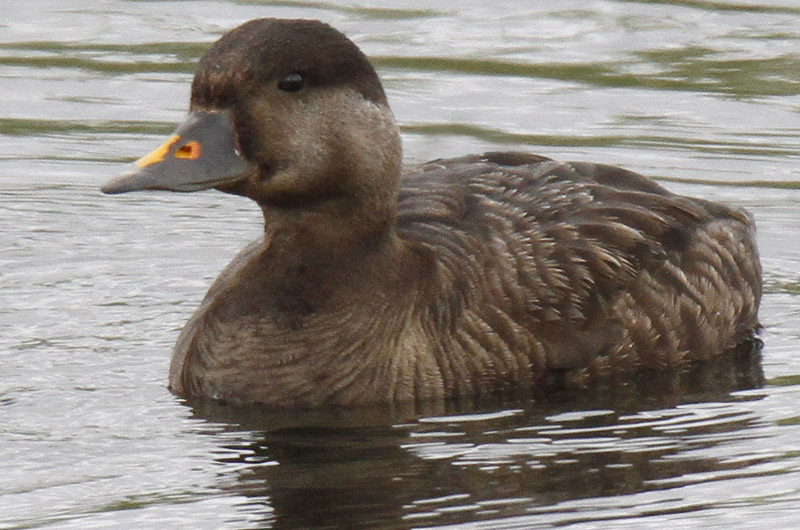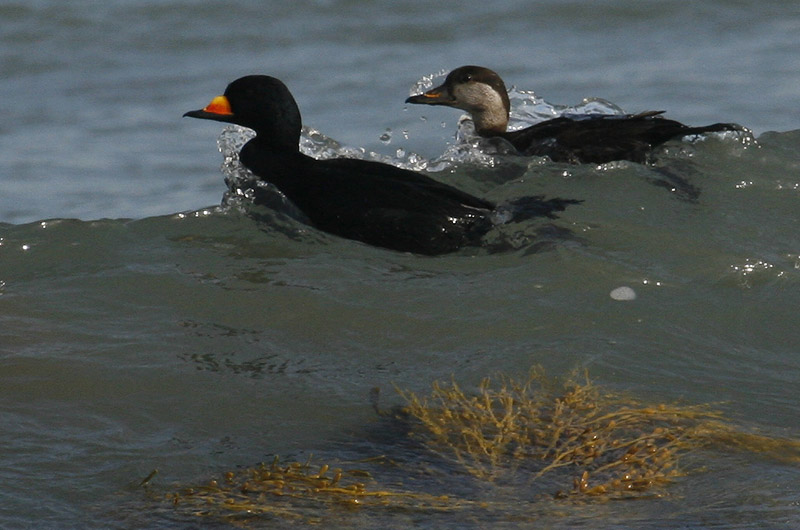Shorebirds are on the move, heading southward from their northern breeding grounds. The numbers of individuals of each species will increase as the migration season continues. So, barring the unexpected, the next few columns will emphasize shorebirds. July is nice for this because the shorebirds we get will be adults — juveniles and their confusing plumages will migrate south later.
So where can you go to see them? The shorelines of tidal ponds and bays are best, and the most frequently monitored sites all seem to be in Edgartown: Norton Point Beach, Cape Poge and Little Neck. Other good ponds to visit are any of the south shore great ponds, especially when they are opened to the ocean. Sengekontacket Pond, especially Sarson’s Island and the salt marshes along the Edgartown side of State Beach, is exceptional, as is the beach near the opening into Lake Tashmoo. Menemsha Pond, especially Lobsterville and Eddy’s Island (salt marshes and tidal flats along the Chilmark side of Menemsha Channel) is also great.
I have mentioned my favorites. The truth is that anywhere there is water there may be shorebirds. Even the little fresh water pond at the headquarters of the State Forest may host shorebirds. And of course there are the agricultural settings. Shorebirds are attracted to bare ground, plowed fields, short-grassy pastures and hayfields. In short, look for them everywhere you go.
Bird Sightings
The sighting of the week is from Nantucket, where there was a leucistic Pacific loon present for a while in Nantucket Harbor. This species is never common and is hard enough to identify when in its normal plumages. It weakened and came ashore, and was caught and sent to Tufts Medical Center in Boston, where it was finally identified. Just a reminder, though that numerous observers found a normally plumaged Pacific loon in Menemsha Bight last December and January. They are so difficult to identify that they probably are more common than we realize.
Patricia Tyra was spellbound as she watched a rabbit chase a crow seven times. Yes, you read that right. The crow was foraging on the ground when the rabbit attacked. The crow flew upward then back down, hopping a foot or two to continue feeding. Seven times this happened before the crow finally gave up and flew to the top of a pine tree from which (s)he scolded the rabbit for a few minutes. A very curious sequence of events. Maybe the rabbit had babies nearby and thought (correctly) that the crow was a threat?
What are any of our winter resident ducks doing here at this time of the year? In June we have reported a surf scoter in Menemsha Pond, harlequin duck and common eider off Gay Head, and a long-tailed duck in Lake Tashmoo. Now, on July 5, Jeff Bernier finds a lone female black scoter on Norton Point. And a breeding plumage long-tailed duck shows up in Aquinnah, as reported by Angelina Stancampiano and Samantha Chaves. This may or may not be the same individual from Tashmoo last seen on June 12.
On July 7, Bill Post was watching some of the usual residents of the tidal flats of Norton Point Beach: two great egrets, many willets, two black skimmers and three American oystercatchers, when a black-crowned night-heron flew in and started hunting in the shallow water. This was the first one he had observed there in a couple of years. That evening, Jeff Bernier also observed this night-heron as well as four juvenile great blue herons — an early migration for a species that does not breed in southeastern Massachusetts. Mr. Post also reports a killdeer at the Edgartown Golf Club on July 8 and a great blue heron at Crackatuxet Cove on July 11.
On July 9, Sarah Mayhew observed the bank swallows nesting in the bluffs at Cedar Tree Neck. She took numerous photographs of the adults feeding their young, confirming the nesting that we all knew was taking place there.
My July 9 guided birding tour was treated to a green heron spectacle beside the fresh-water pond at the Head of Lake Tashmoo. It started when a green heron flew in from Tashmoo, landing in the vegetation along the western edge of the pond. All of a sudden the bush was alive with three or four dark grayish young green herons. After much activity for a minute or so, the adult flew off to perch on a nearby branch over the water, and the youngsters disappeared from view back into the shrubbery.
The southward shorebird migration continues. On July 9 Lanny McDowell found a least sandpiper and a short-billed dowitcher at Little Beach in Edgartown. The next day, he spotted an adult black tern in breeding plumage flying westward over the Mattakessett Herring Creek in Katama. This is undoubtedly a different individual than the one Mr. McDowell spotted near there on June 18, as the June bird was in first winter rather than breeding plumage.
Warren Woessner checked out the tidal flats of Norton Point on July 10 and found lots of shorebirds, including black-bellied plover, piping plover, greater yellowlegs, short-billed dowitcher, willet, sanderling, least sandpiper, spotted sandpiper and black-crowned night-heron.
David and Libby Fielder found a family of Baltimore orioles bathing in a small puddle on July 10, including the bright orange and black male. Indeed, we need to be ready as we never know where the next interesting sighting will take place.
Southward migrating shorebirds have arrived as the nesting season winds down. Go out looking for birds and please be sure to report your sightings to birds@mvgazette.com.
Robert Culbert leads Saturday morning guided birding tours and is an ecological consultant living in Vineyard Haven.







Comments
Comment policy »